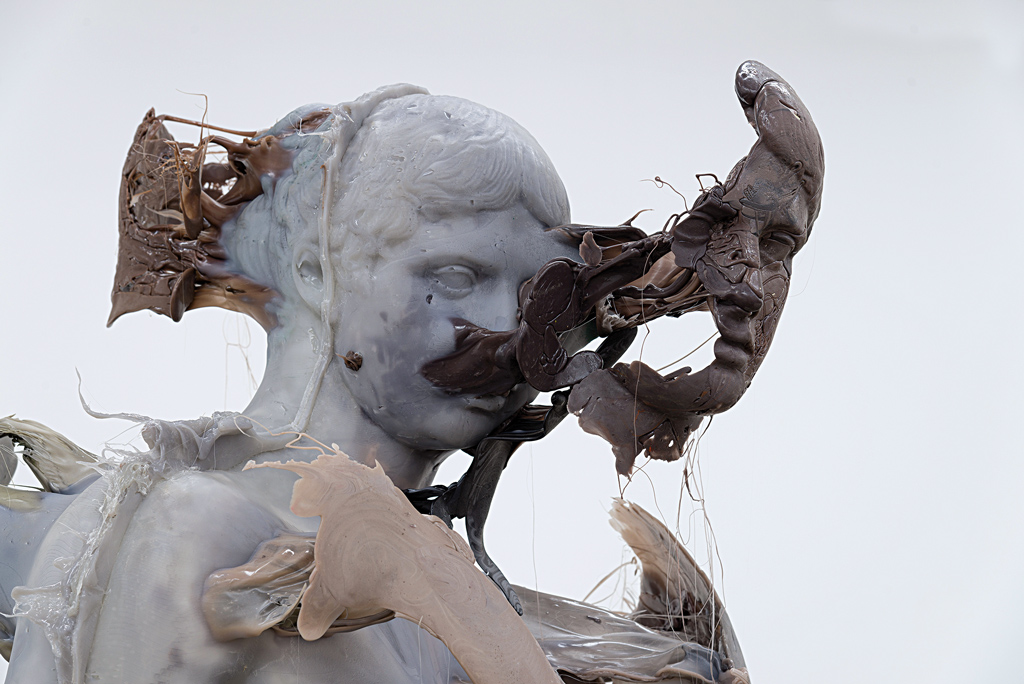[ad_1]
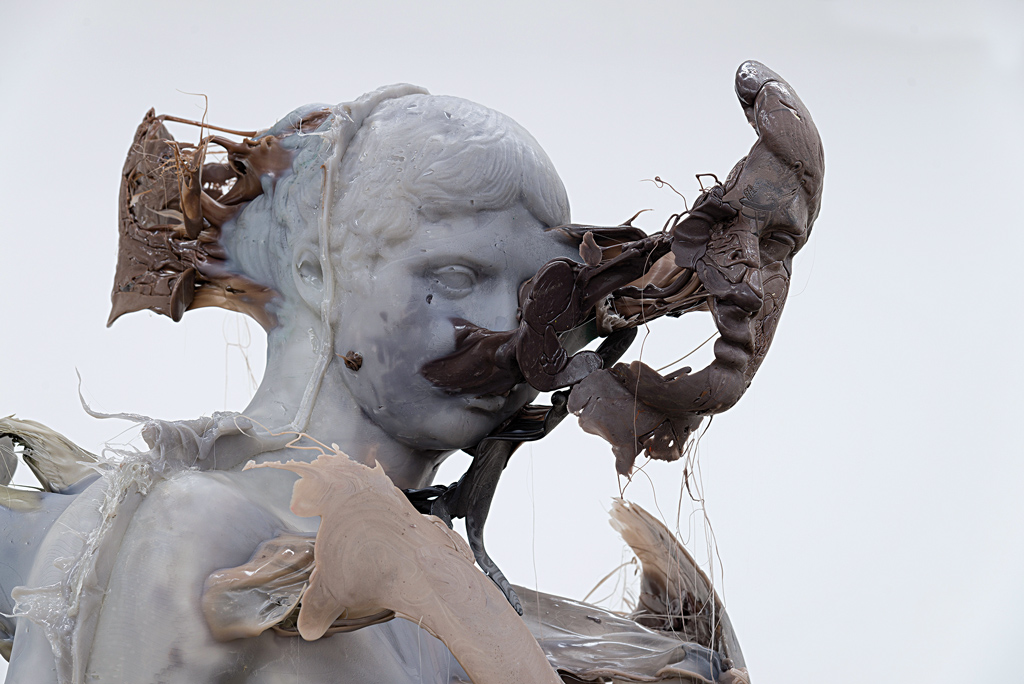
Jin Shan, Nowhere (detail), 2015.
COURTESY THE ARTIST
BRAND SPANKIN’ NEW
Brand New Art from China: A Generation on the Rise, by Barbara Pollack, 192 pp., I. B. Tauris
In a refreshingly crisp, insightful, and information-packed text, Barbara Pollack, ARTnews’s longtime contributing editor and China specialist, dives into the newest of new art from China, segueing out of the well-covered territory of politically reactive and slick high-end product and into the more conceptual, personal, and confounding art-making of the moment.
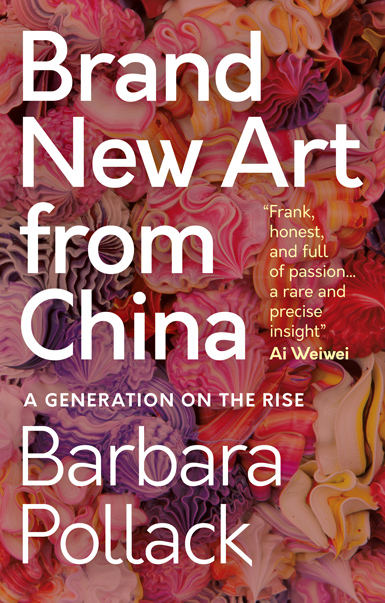
I. B. TAURIS
The book charts the rise of the contemporary scene in the fast-modernizing nation, from the early generation of artists who emerged in the 1980s, like Cai Guo-Qiang, Xu Bing, and Zhang Huan, to the middle generation, including Yang Fudong and Xu Zhen, who “mash together Eastern and Western icons” while also dealing with 5,000 years of Chinese culture and trying to tackle questions of national identity, to the newest generation, who are notable for their independence, individuality, and inventiveness. Chinese artists today don’t worry if the government closes a show. Such, they reason, is just the price of doing business, Pollack tells us.
So much has changed so quickly. And so, to assess the present moment, Pollack interviewed more than 100 artists, discussing what they are reacting to and/or against in this newly global world, populated by an overload of facts, fiction, avatars, and artificial intelligence. She explores more than their art, looking into their history, their habits, their families, and even their sexuality. In a culture that remains socially conservative in many ways, the artists are wrestling overtly with such complicated issues as sexual orientation and gender identity.
Artist Lu Yang, according to Pollack, said she “doesn’t live in China, she lives on the internet. It allows you to have a fluid identity that’s made up on the internet.” These artists reject nationalism, though not nationality. They bare their souls, and their bodies. Ma Qiusha addresses the abuse she experienced from her “tiger mother” and her guilt over leaving to study in the United States after her parents had spent so much money to send her to art school. She literalized her shame in a photographic self-portrait revealing her mouth dripping with blood from holding a razor in it.

Lu Yang, Delusional Mandala (still), 2016.
COURTESY BEIJING COMMUNE
In an interview in CoBo, the Hong Kong publication, Selima Ting quotes Pollack as noting, “These artists use avatars and social media to communicate very easily with people all around the world. The impact of technology is huge on this generation.” Pollack refers to them as “the post-passport generation,” who find the labeling as a ‘Chinese artist’ to be “an uncomfortable burden, imposed by curators, both foreign and Chinese, who are sorely behind the times,” opting instead for this more cosmopolitan term that is “not exclusive to Chinese artists.”
When dealing with such a mammoth topic, everything is a moving target—the artists, the institutions, the politics, the media, the means, and the finances. What is most striking about Pollack’s book is how much the author covers in this relatively small space.
Looking at Bo Wang, who came to the U.S. to get a doctorate in physics but ended up at the School of Visual Arts in New York making documentary films about China, Pollock wonders why his work focuses on China when he is so entranced with—and based in—New York. The artist goes back to China for long stretches, pointing out that there is so much happening there that he has to keep trying to figure it out. He sees “China as a subject matter, not an identity,” and as such “he is producing a new form of Chinese contemporary art, framed by academic theory learned in Western art schools, but located in the issues raised by life in contemporary China.”
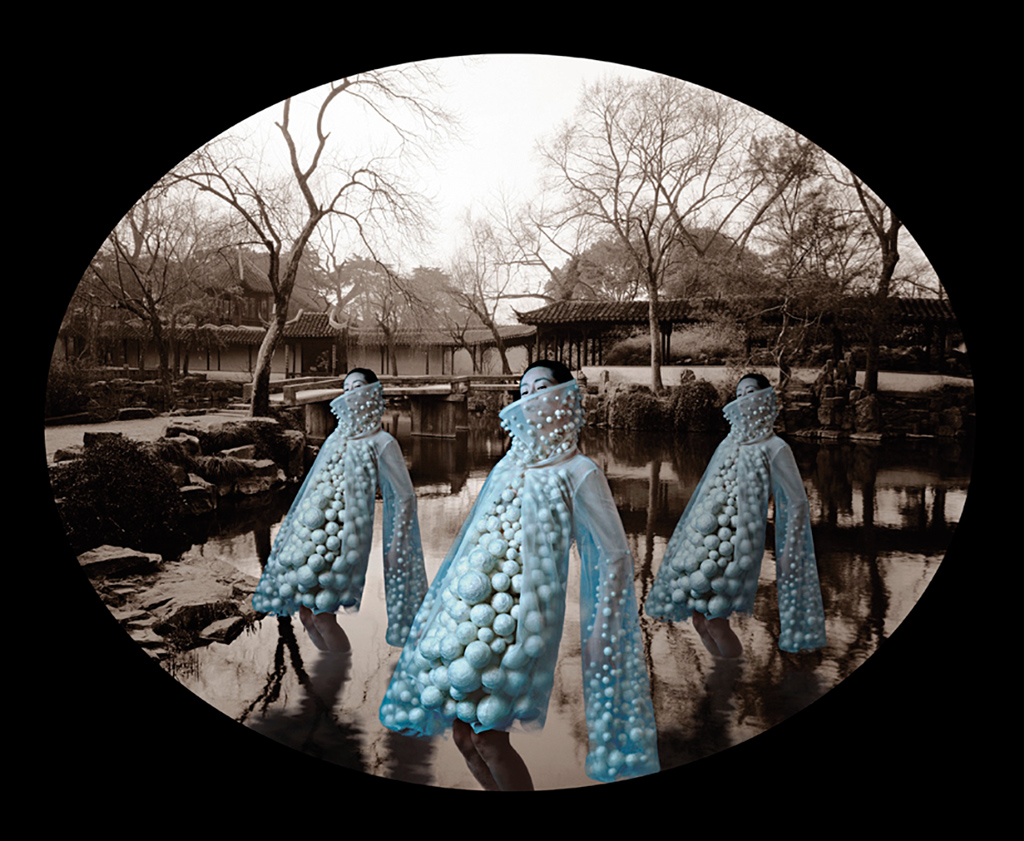
Lin Tianmiao and Wang Gongxin, Here or There, no.1, 2002.
COURTESY GALERIE LELONG
Pollack observes how artists who are products of China’s one-child policy, like Yan Xing, “are more determined to be seen as unique and original rather than part of a collective or movement.” And they are rejecting the traditional divide between Chinese and Western painting. Rather, they want to “globalize their artworks as much as possible to take advantage of international opportunities.”
The young collector Michael Xufu Huang has observed, “I think that every generation has something that is really prominent—for the Renaissance, there’s religion and for Impressionism, there’s the invention of the camera—but nowadays, everything is technology and the internet.”
As Liu Wei said of his new-fangled cubistic work: “There is no dichotomy between the abstract and the figurative in my work; the abstract can be figurative, and vice versa.” The work, he said “is more about a new way of seeing by creating ‘realities’ that can alter the viewer’s point of view.”
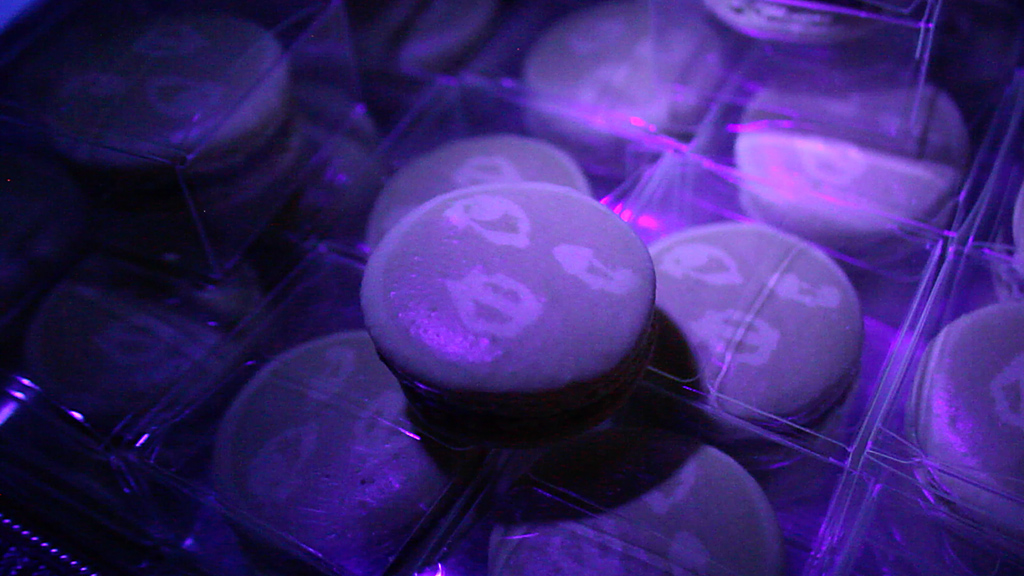
Pastry portrait of Tony Oursler.
MICHAEL MOLINA, KREËMART
PASTRY PORTRAITS
For about a decade now, Raphael Castoriano, an exuberant art adviser and curator, has been running Kreëmart, an enterprise that produces artist projects involving experimental pastry. For his most recent, very brainy, collaboration he’s worked with Tony Oursler, video master of the near-surreal and creator of the interactive video portrait, and neuroscientist Idan Segev, the editor of the journal Frontiers in Neuroscience. Aptly titled Mind Blow, the experiment, which took place September 27 at Rosey Concert Hall in Rolle, Switzerland, touched on the occult, the edible, and the autobiographical.
“It works this way with Tony,” Castoriano said, as he began to explain the process. “You enter a theater and there’s a questionnaire; the taste you are seeing while you watch a video is the taste of Tony Oursler. This video has his biography, which gives you his taste.”
The idea, said Castoriano, is to turn taste—in all senses of the word—into an edible confection, which in this manifestation takes the form of sugary macarons. Castoriano casts a wide net when collaborating, engaging artists, chefs, scientists, and theater audiences. He has enlisted the French baker Ladurée to create the macarons. When all is said and thought, the audiences get to sample the taste of the particular subject.
The Kreëmart project, which premiered with Marina Abramovic in Turin, will have more iterations, and is accompanied each time by a discussion and a gala benefiting brain research.
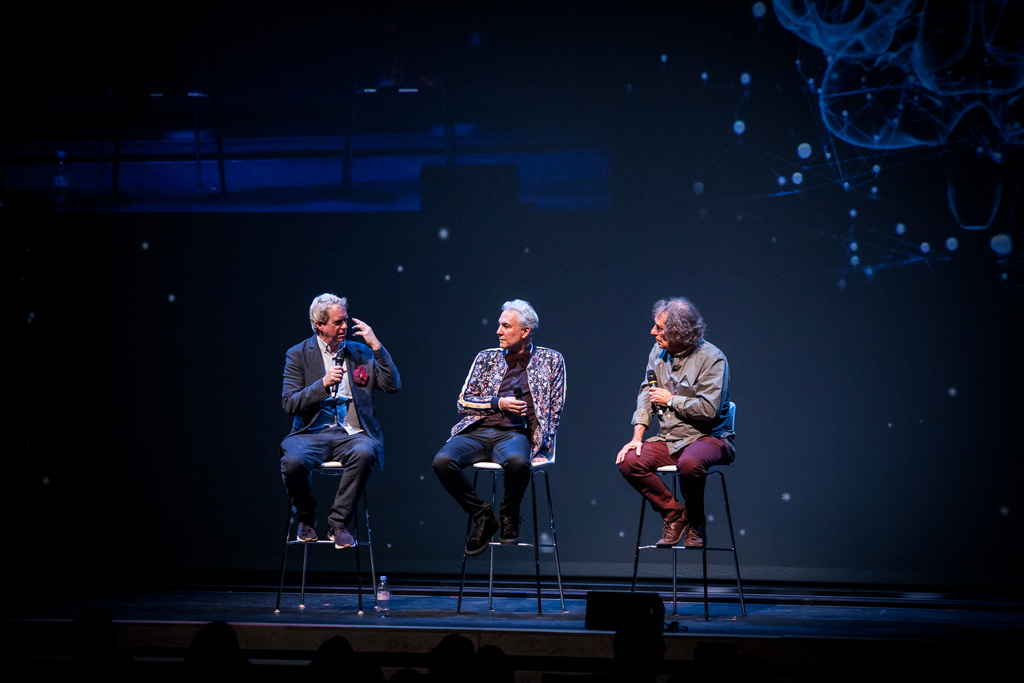
From left, Tony Oursler, Raphael Castoriano, and Idan Segev at the 2018 Mind Blow Gala.
JOELLE MISSON
Segev is the head of an artificial brain project that he began in conjunction with Hebrew University’s Neurotech Center in Jerusalem. The Center was celebrating its 100th anniversary.
Oursler was easily persuaded to engage. “I liked the taste of Marina’s project,” he said. “It brought up a lot of neuro research. I interviewed the doctor, who’d done a lot of research on creativity, and he interviewed me.
“Taste is autobiographical,” Oursler continued. “I have certain things I like. It’s interesting—soul-searching about my personal history. My mom had just sold the house I grew up in. This project involved unlocking my own memory.
“It’s Proustian, bringing up memories through the sugar.” In his planning for the piece he recalled associations with candy and drugs and other such materials flowing through the environment, and then, he said, “I decided to make a video which coincided with creating a Public Art Fund project currently on view in in Riverside Park along the Hudson.
“You start to plumb the depths of what literal taste is—what will provoke memory. When I ate the macarons, I almost hallucinated. Raphael’s interview had questions about odors and taste. It was a very personal picture—what I like/what I don’t like,” Oursler explained.
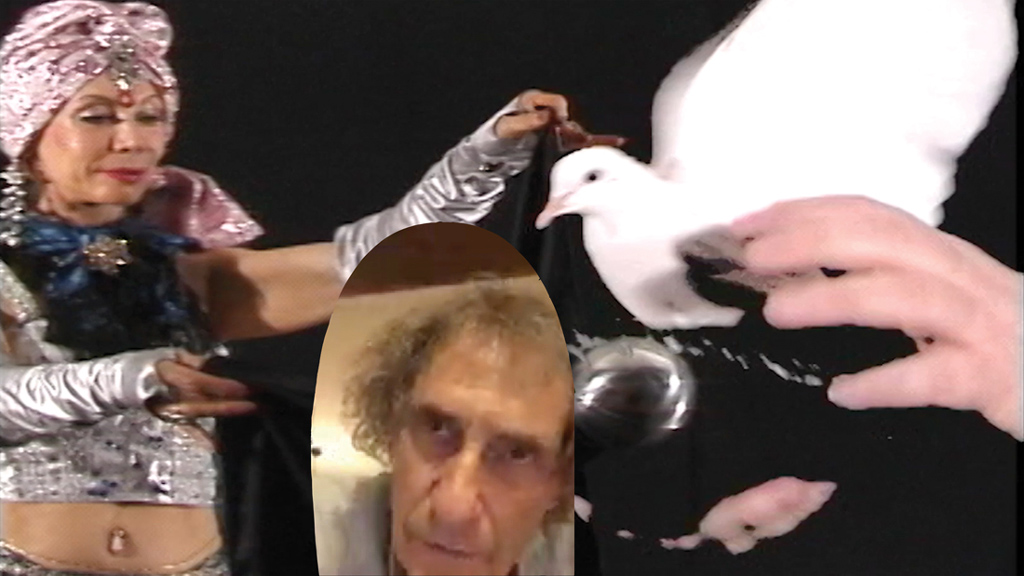
Tony Oursler, Mind Blow Pastry Portrait™ (excerpt), 2018.
COURTESY THE ARTIST
“Raphael converted the interview into the macarons. Because of his relationship with these French chefs, he converted it into a consumable thing. There’s a black light which makes an image of a work of mine appear on the pastry,” he said.
“At the same time, there’s a film of my tastes—including footage along the banks of the Hudson.
“People eat the macaron and consume the food which they get while watching the film. It’s very interactive. You’re tasting. In effect, you’re eating your brain (no cannibalism is involved).
“It’s a poetic incursion into my particular tastes, which are actually weird—often Spartan.”
Oursler first encountered a Kreëmart project at a paranormal show in Turin, Italy, for which he created a work dedicated to Gustavo Role, who from the 1930s to 1994 was celebrated as a painter and “spiritual master.”
As Castoriano pointed out, “This art is ephemeral. You’re tasting someone.” Here is “identity in the form of taste.”
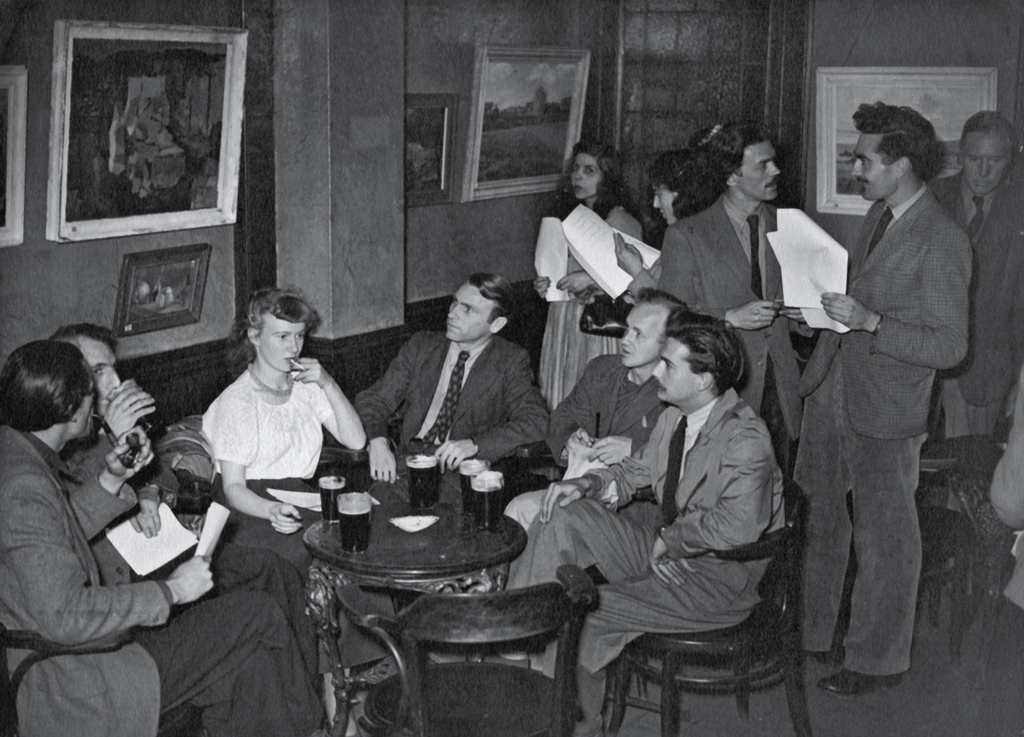
A 1948 photo by Gillian Ayres at the Walmer Castle pub near Camberwell School of Art, with Ayres (center) and Henry Mundy (to the right of Ayres).
COURTESY THE ARTIST
REPORT FROM LONDON
Modernists and Mavericks: Bacon, Freud, Hockney and the London Painters, by Martin Gayford, 340 pp., Thames & Hudson
There’s a wonderful sense of intimacy and an abundance of critical insights in Martin Gayford’s vivid portrait of Britain’s post-World War II modernist painters.
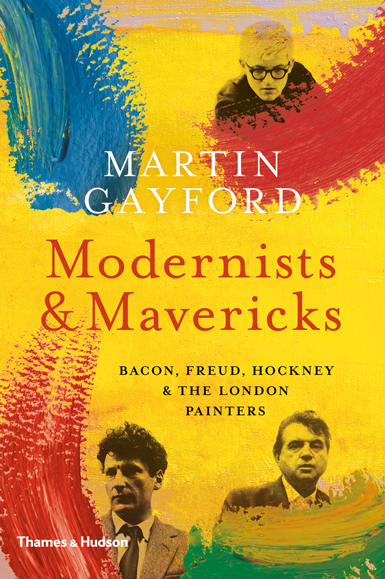
THAMES & HUDSON
In this well-documented and elegantly written book Gayford covers terrain from the historical to the biographical, from the sociological to the psychological, from the stylistic to the technical.
The book, which is also not short on behind-the-scenes gossip, is based on Gayford’s extensive archive of interviews with the artists. A longtime reporter and critic for the Spectator as well as other publications, including ARTnews, he befriended many of the artists he covered and he quotes directly from their rich and forthright conversations.
Built atop the fragile, uneasy foundation of Lucian Freud and Francis Bacon, along with a topping of David Hockney and such colorful and complicated figures as Frank Auerbach, Alan Davie, Frank Bowling, and David Bomberg, the story is spellbinding, detailing their passions, jealousies, and career shifts. Along the way, we see people moving in and out of prominence, not the least of them Bacon and Freud, who’ve made it back into the foreground at this eclectic moment.
Hockney exemplifies the “maverick.” He is one amid a quirky line of British painters that includes Hogarth, William Blake, Stanley Spencer, and Bomberg. A nonconformist, he began with Abstract Expressionism, and then moved through a range of idioms, focusing on words, figures, objects, landscapes, photographs, and now digital renderings. He was making representational paintings that were not “naturalistic,” as Gayford explains, but that express “a brilliantly realized intellectual recreation of appearances.” Hockney has held his own in a kind of noncommittal netherland.
Hockney surprised with his 1965 Portrait Surrounded by Artistic Devices, breaking from his sharply defined images and lapsing into suggestive forms (a Morandi-evoking array of vases, a stack of brushy brown blocks vaguely calling to mind Cézanne, and a stiff fellow in fragile profile) demonstrating his “lifelong journey into pictorial space,” Gayford observes.
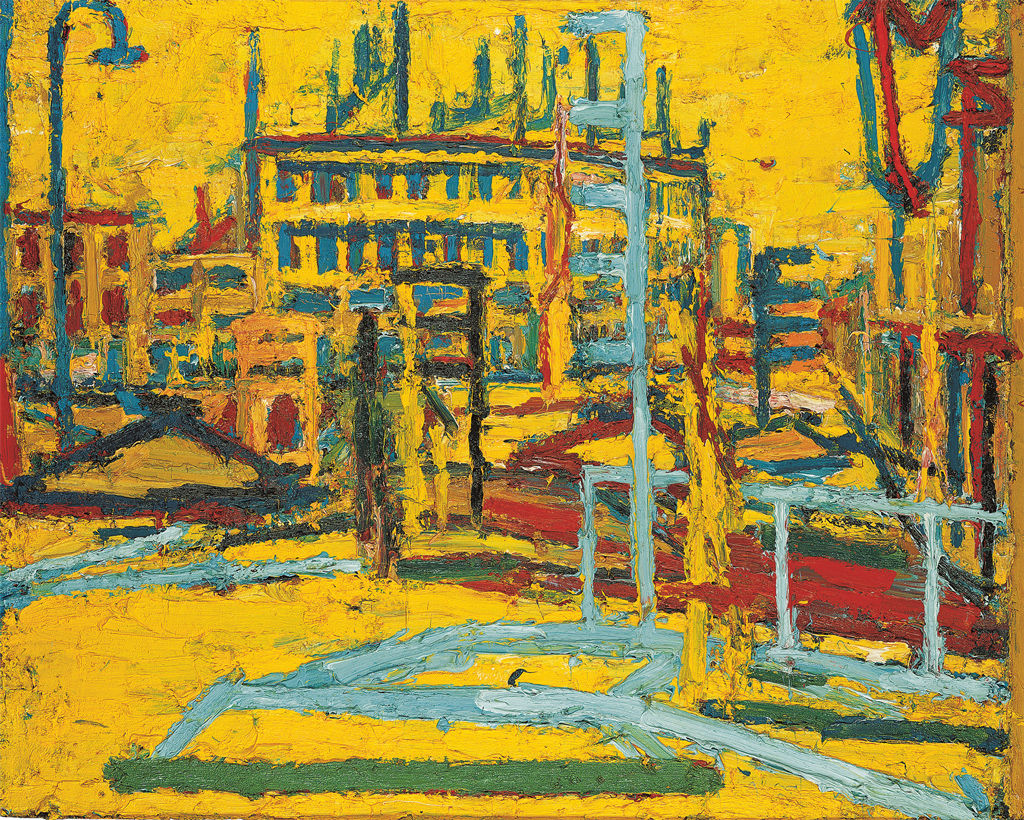
Frank Auerbach, Mornington Crescent with the statue of Sickert’s father-in-law III, Summer Morning, 1966, oil on board.
©FRANK AUERBACH/COURTESY MARLBOROUGH FINE ART/PRIVATE COLLECTION
The writer happily delves into the often-contentious terrain of abstraction versus representation, and tackles reality versus the imagination. Bacon suggested that Freud was limited by his literalness—his insistence on working only directly from his subjects and not from his imagination. At the same time, Bacon disdained abstraction as decoration, and considered most figurative art mere “illustration.” Channeling Bacon, Gayford writes, “The first had no connection with the drama and tragedy of human life; the second was just duplicating the work of a photograph.”
The postwar elephant in the room, so to speak, is the United States—that is, New York, essentially—the excitement of Ab-Ex, the aura of Clement Greenberg, the boldness and brightness of Pop, the sexual freedom and the affluence and frisson of the city.
The landscape never stopped shifting, with artists moving in and out of popularity according to social conditions and trends. Richard Smith, for example, was very popular in the ’70s, painting abstract canvases in primary colors (red, blue, and yellow) inspired by sports and advertising imagery. He loved the packaging of consumer society and was, naturally, an adherent of Marshall McLuhan.
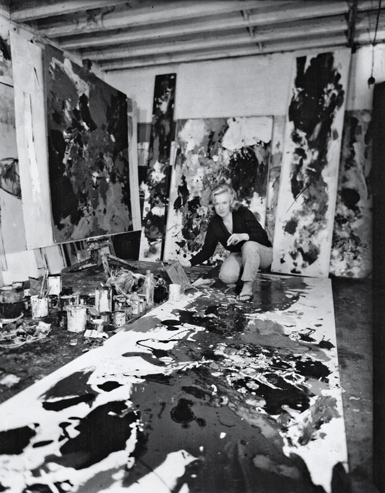
Gillian Ayres, August 1958, at her studio on Chiswick Mall, London, for an issue of Vogue.
COURTESY THE ARTIST
Smith’s paintings were clearly Pop-related but softer, with more depth and implied energy. He was chosen in 1970 to represent Britain at the Venice Biennale. But Gayford reports seeing him in 2001, when Smith lamented, “I was the right kind of artist for that kind of time,” He continued. “I just expected to be in international group shows. Then . . . I don’t know.” As Gayford sums up the situation, “In art, judgments and reputations always remain provisional. . . . Artists can disappear, as Freud did in the late 1950s and 1960s, but also reappear as he did in the 1980s and 1990s.”
While there are not so many women in this gathering, those at the forefront have retained their independence and reputations, including the aggressive gestural painter Gillian Ayers and the analytic Op-ist Bridget Riley, who was inspired at one point by a pattern on the paving of Piazza San Marco in Venice where a flurry of rain transformed the paving into a geometric pattern. “She was fascinated by ‘seeing something that was whole, temporarily shattered, then whole again,’ ” he writes, quoting the artist’s words. The power of her works, he continues, derived from capturing “visual sensations: not a placid rustic scene, but a landscape swirling in heat.”
By the end of the book, we realize that there really is no single strand that truly unites these forceful and vulnerable mavericks—that brings together the troubled, literary, gestural, post-Pop painter R.B. Kitaj and the lesser-known semi-fantastic painter John Craxton along with the aggressive expressionistic Bomberg, the master of impasto Auerbach, and the often-forgotten painter lyrical Victor Pasmore. These artists all march to their own drummer and are here finally getting much of the attention they deserve.
[ad_2]
Source link

